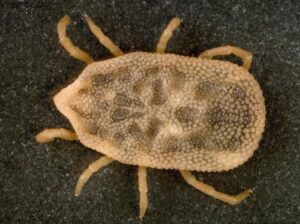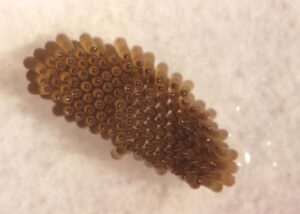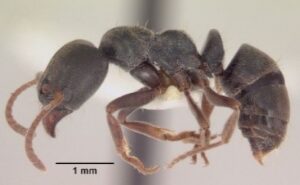Face Fly:
General Description

Credit: TristramBrelstaff |

Credit: James Lindsey |
- The face fly is similar to the closely resembles the house flybut is slightly larger,
- They are about 7–8 mm long.
- Adults are grey in color with four dark stripes on the thorax, with a grey-black patterned abdomen.
- The eyes in males almost touch when viewed from above.
Life Cycle and Common Characteristics
- Females deposit eggs only in newly deposited manure from cattle on rangeland or pasture.
- Eggs hatch within hours after deposition.
- The larvae are yellow in color. They pass through three larval stages, growing to about 12 mm long, then developing into white pupae.
- Adults emerge after 10 to 20 days of egg deposition.
- Adults emerge from winter hibernationfrom March to April.
- They feed on manure juices and plant sugars, and on secretions around the eyes, mouth, and nostrils of horses and cattle.
- They also feed on the host’s blood through wounds caused by orse-fly
- Most of the flies on the host are females searching for protein sources.
- Male flies feed only on nectar and dung. They rest on branches and fences, attempting to catch a female and mate
- At night, both sexes will rest on vegetation.
- The life cycle (Egg to adult) takes about 3 weeks
Damage and Medical Implications
- Female face flies typically cluster around the host animal’s eyes, mouth, and muzzle, causing extreme annoyance.
- Face flies are economically important to livestock producers since they transmit eye diseases and parasites to cattle.
- Contaminated females can transmit infectious bovine keratoconjunctivitis (pinkeye) and bovine rhinotracheitis to their hosts.
- They are the source of nematode eye worm, Thelasia rhodesi, and infections in horses and cattle.
- The female face fly’s persistent feeding habits produce significant annoyance and irritation.
- The cattle’s defensive behavior can affect grazing patterns.




